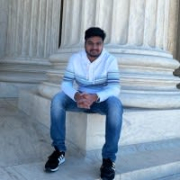Amazon EKS and a few particular services are used with the help of Amazon Virtual Private Cloud in our company. In our organization, we have a few dedicated services on Amazon Virtual Private Cloud.
The most valuable features of the solution stem from the security groups it provides. Network access control is also a beneficial feature of the product. With the security group as a part of Amazon Virtual Private Cloud, users can access any particular URL or IP address to which access has been assigned. The benefits provided by the product include enhanced security features along with customizable policies that can be adapted or changed whenever required.
From an improvement perspective, the product's initial setup phase should be easy for those who are not experienced in creating VPCs.
I have experience with Amazon Virtual Private Cloud.
Stability-wise, I rate the solution a ten out of ten.
Scalability-wise, I rate the solution a nine to ten out of ten.
The product's initial setup phase is easy if you have a certain amount of experience in creating VPCs.
In our company's cloud architecture, we have two Amazon Virtual Private Clouds used in multiple regions. Amazon Virtual Private Cloud also has multiple subnets, consisting of four public subnets and four private subnets. In public and private subnets, my company has multiple services. Our company's main database is maintained in the private subnet. The normal services are used on the public subnet. An internet gateway is present on a public subnet. If my company needs to access any data from the public subnet, we can use the internet gateway and access any services we want. If my company wants to access any database, then we will have to maintain it on the private subnet. In our company, we have to attach the NAT gateways to the public subnet. Within those NAT gateways, we can access the data in private subnets.
Scaling resources is not a part of Amazon Virtual Private Cloud. Resources would be a part of the services available in subnets.
In subnetting, that is, public subnets and private submits. Public subnets have internet access. Users can access any kind of data from the public subnet with the internet. In private subnets, users don't have any internet access. If you need to access data on the internet from private subnets, you can use NAT gateways.
It is easy to deal with the setup process of network ACLs and security groups in Amazon Virtual Private Cloud.
In terms of the integration of AWS services with Amazon Virtual Private Cloud, most of the services in our company are created inside Amazon Virtual Private Cloud. For any of the services that we use in our company, we select Amazon Virtual Private Cloud. My company has the option to choose the product's default and dedicated version, and we choose the dedicated Amazon Virtual Private Cloud. Whatever we use or create in our company is assigned to the dedicated Amazon Virtual Private Cloud chosen by us.
I recommend the product to others who plan to use it.
My company deals with many Amazon Virtual Private Clouds available in multiple zones. If we need to access data in an Amazon Virtual Private Cloud from a separate Amazon Virtual Private Cloud, the company can use VPC peering to connect them.
I rate the tool a nine out of ten.











